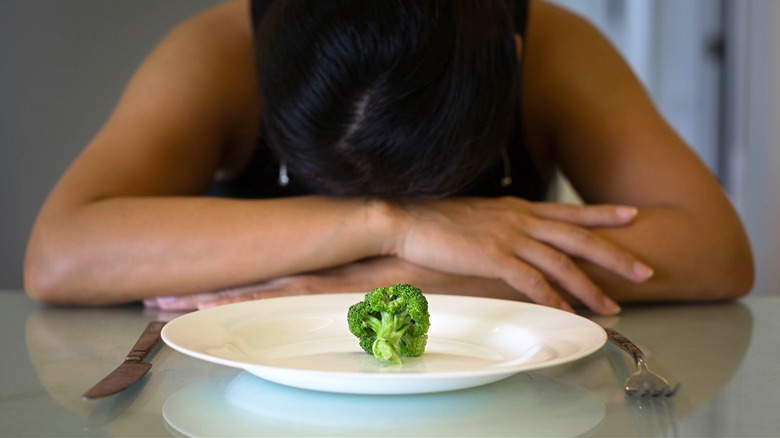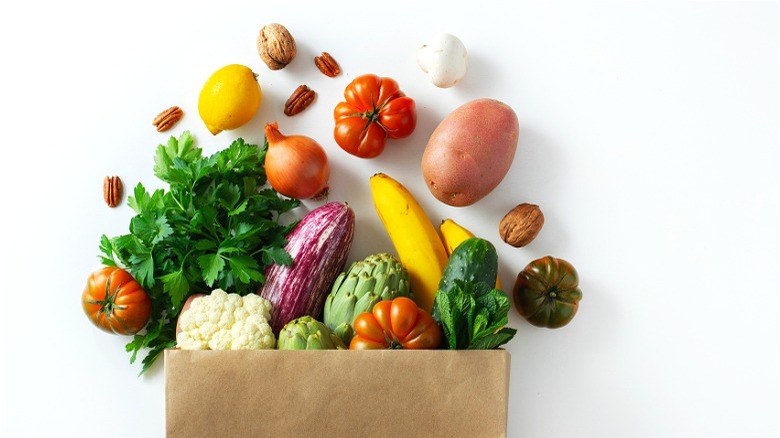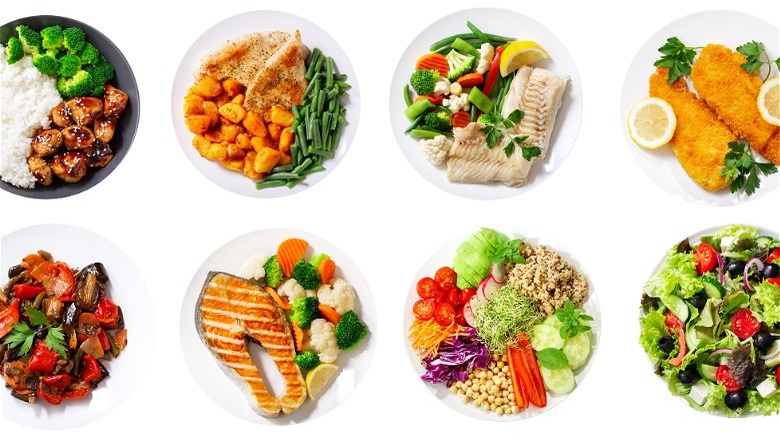I Practice Clean Eating, So Of Course I'm Broke
It was just another Sunday: the day I often go food shopping for the following week. Before taking our kids to a nearby playground so I could buy groceries in peace, my husband turned to me with a hopeful look and told me to try and keep the cost under $220. Not an unreasonable request, I thought — but as always, my mind started to fill with doubt as I pondered how I was going to buy enough food to last seven days and properly feed five thriving humans.
Full disclosure here: My husband and I aren't exactly financially secure. We both work, pay our bills, and rarely pay for extra activities or treats that bring us joy. Yet out of all the priorities on our family's mental checklist of necessities, eating clean has always been number one or two. My family has never needed external motivation to eat clean.
During my existence before kids — but after years of anxiety, depression, and little sleep — I discovered the euphoria that came with clean eating. One husband and three kids later, I can safely say there are no diets or "food rules" in our home. We eat whole foods and packaged snacks with minimal ingredients simply because they make our bodies feel good. Even so, the monetary toll simple ingredients have on our family's budget often makes me wonder if our decision to follow a quality diet will forever keep us in the poor house.
What is clean eating, exactly?
While no universal definition exists, the Harvard T.H. Chan School of Public Health defines clean eating as the consumption of whole foods — often organic — along with sustainably raised meats and packaged or prepared foods with minimally added ingredients. There is no comprehensive laundry list of clean-eating-approved foods. I simply strive to keep my groceries as basic and straightforward as possible.
One of the biggest reasons I follow a clean diet is to reap the benefits of eating nutrient-dense foods. In 2022, food scientist Giulia Menichetti pointed out that 73% of America's food products were considered heavily processed. Not only can processed foods affect long-term health, but an overload of refined sugar and simple carbohydrates can take a toll on the body's day-to-day energy.
That being said, the dietary guidelines I adhere to aren't without controversy. Detractors commonly argue that clean eating is elitist at its core (though clean-eating defenders point out that there are various ways to make this style of eating more accessible to everyone). It's true that eating more vegetables can be difficult for those trying to minimize food costs. Nutritious food is not only more expensive, but high prices are preventing a number of consumers from buying wholesome food. So is there a compromise?
The high cost of clean eating
While finding a restaurant that serves up bank-breaking dishes is not difficult, the reality of consuming whole, minimally processed foods in the confines of my own home is equally exorbitant. As inflation raged in 2021 and beyond, basic food costs began to soar.
According to the U.S. Bureau of Labor Statistics, meat, eggs, produce, and dairy products have all seen inflationary adjustments of at least 7% per individual category — and that's just in 2022. The U.S. Department of Agriculture claims that in 2021 alone, at-home food prices rose by 3.5% — and in 2022, by 11.4%. These statistics become convoluted when I discovered that many consumers are willing to pay more for ingredients they recognize. Based on one 2017 survey, over 40% of Americans are willing to pay over 75% more for foods that have nutrition labels with clean ingredients.
Unfortunately, inflation and the high price of clean-label packaged snacks have put the idea of "clean eating" out of reach for many U.S. residents. A 2022 survey cites that out of 1500 participants, 74% would make cleaner food choices if grocery prices weren't so high. Around 57% of those surveyed responded that they had also stopped purchasing organic or quality ingredients in order to make their hard-earned dollars stretch. To put it simply: If I want to keep eating quality, nutritious food, research proves I am going to continue paying for it with my precious time and little money.
Is there a way to cut the costs of a clean diet?
The reality of nutritious quality food costing less in the coming years doesn't seem likely, yet there are a few ways I've learned to make cleaner food choices work for my growing family and our tight budget. I try and stick to the basics and follow the Dietary Guidelines for Americans, which showcases the recommended amounts for each food group. MyPlate.gov suggests half of my plated meals should be comprised of fruits and vegetables, but here is where I try to think outside the proverbial box.
One 2015 study found the nutrient makeup of many frozen fruits and vegetables to be the same or greater than fresh and prove to be up to 50% cheaper. I often buy frozen produce, and for protein sources other than meat, I've leveled up my culinary skills by learning how to cook beans by type, or buying a bag or two of lentils from time to time.
The price I pay for quality food will most likely prevent me from buying a $400,000 house, a brand-new car, or extravagant vacations. I may always feel bad about the money in my bank account, but at least I can feel good about the food in my stomach.



